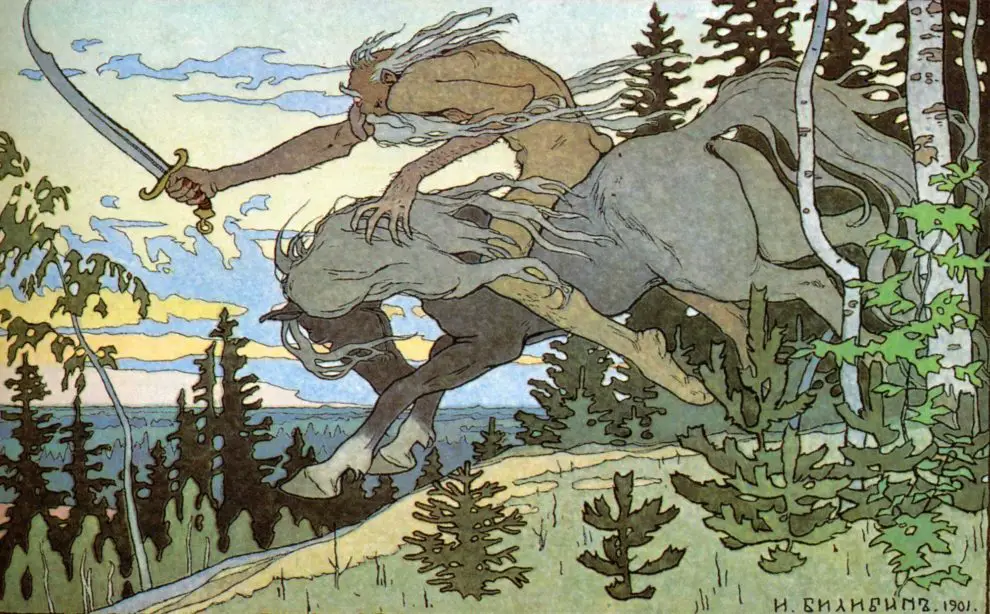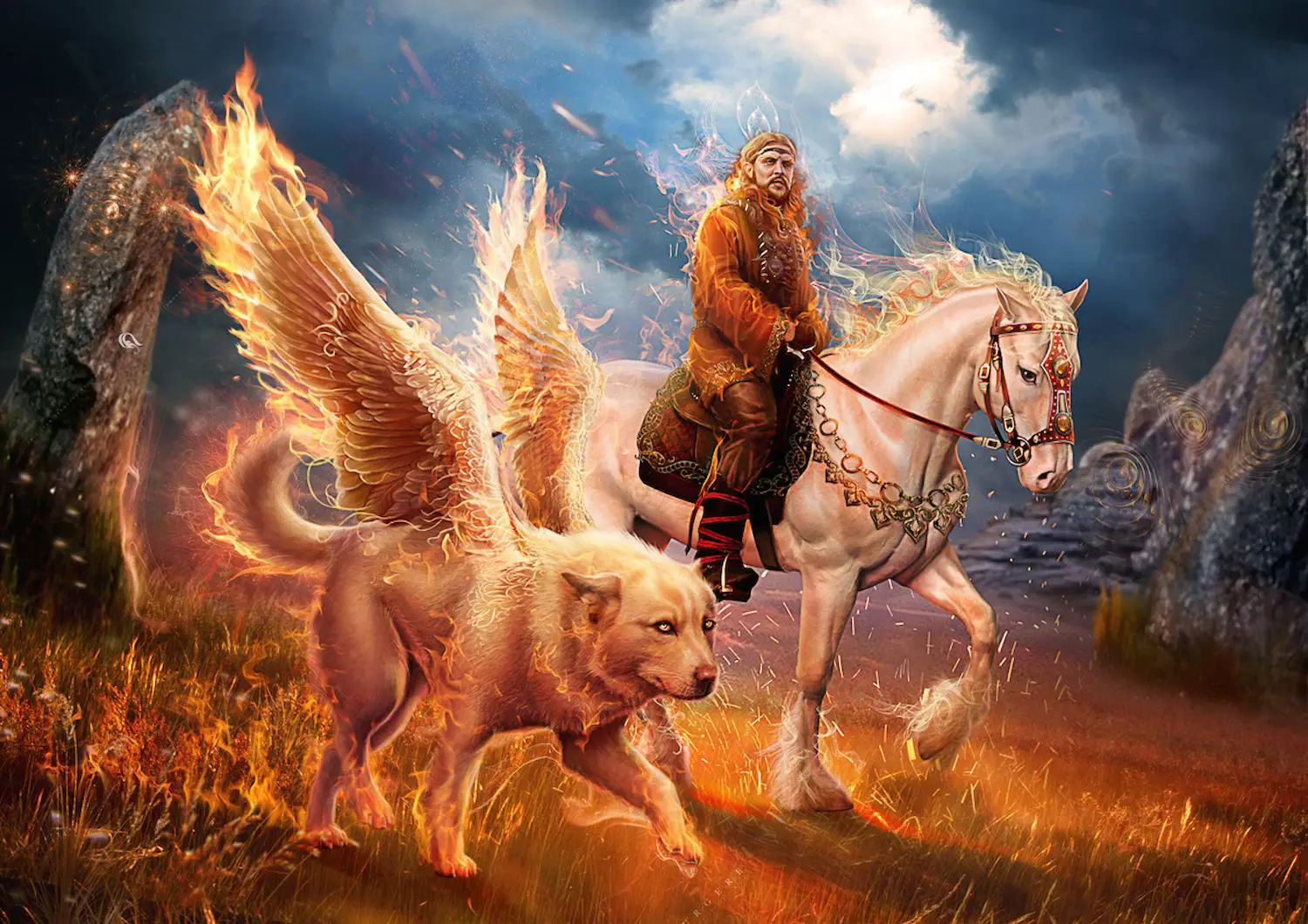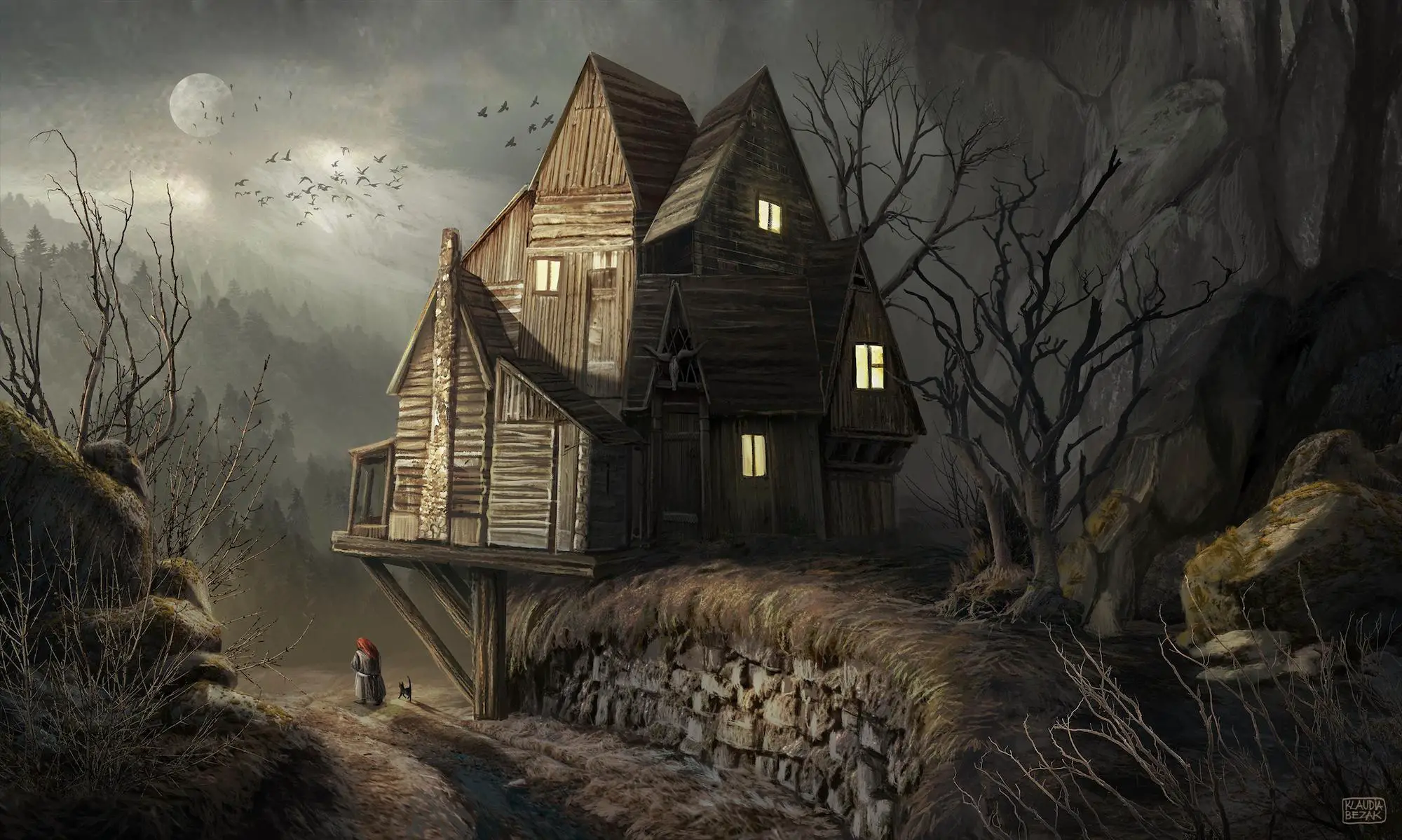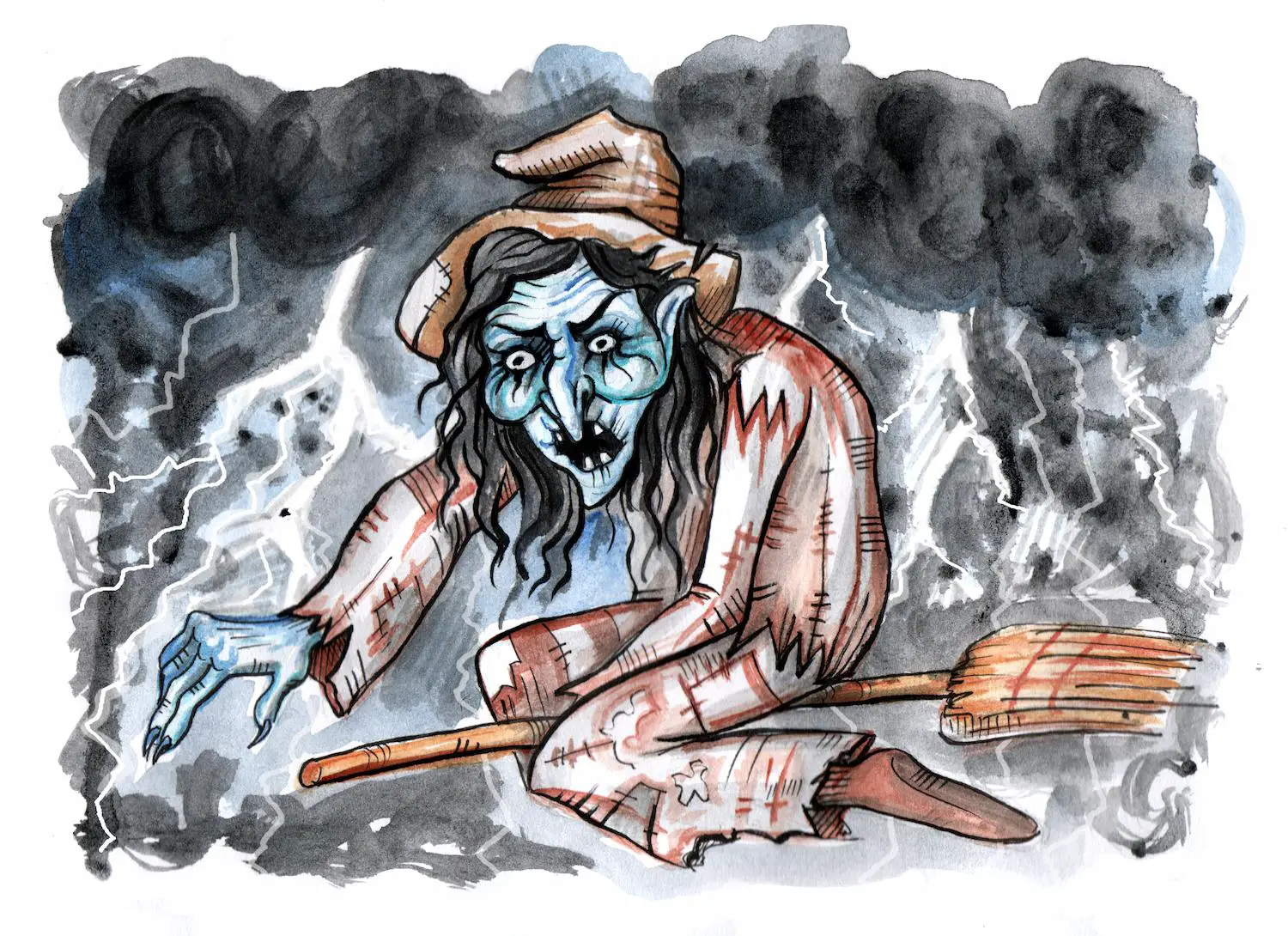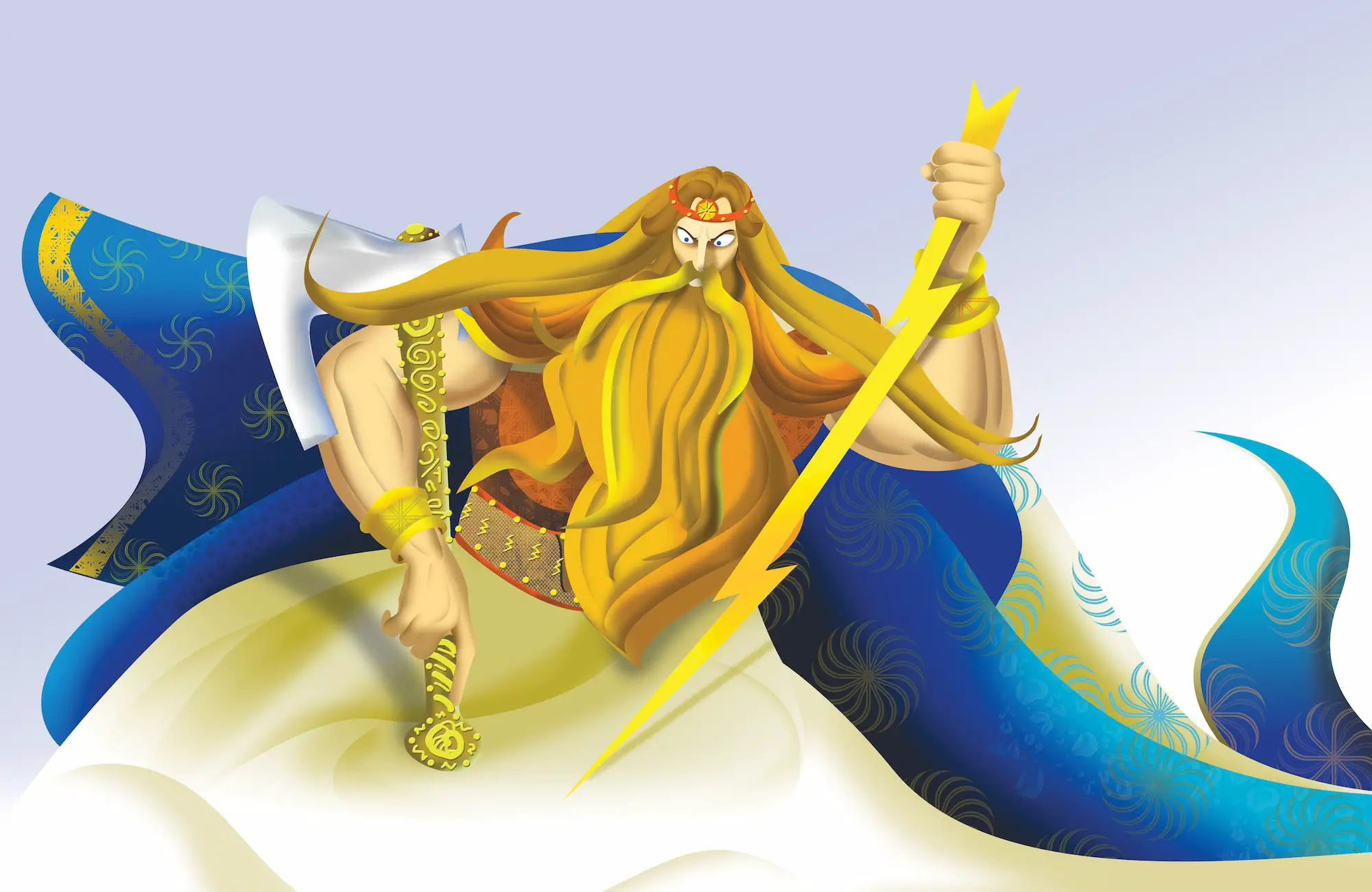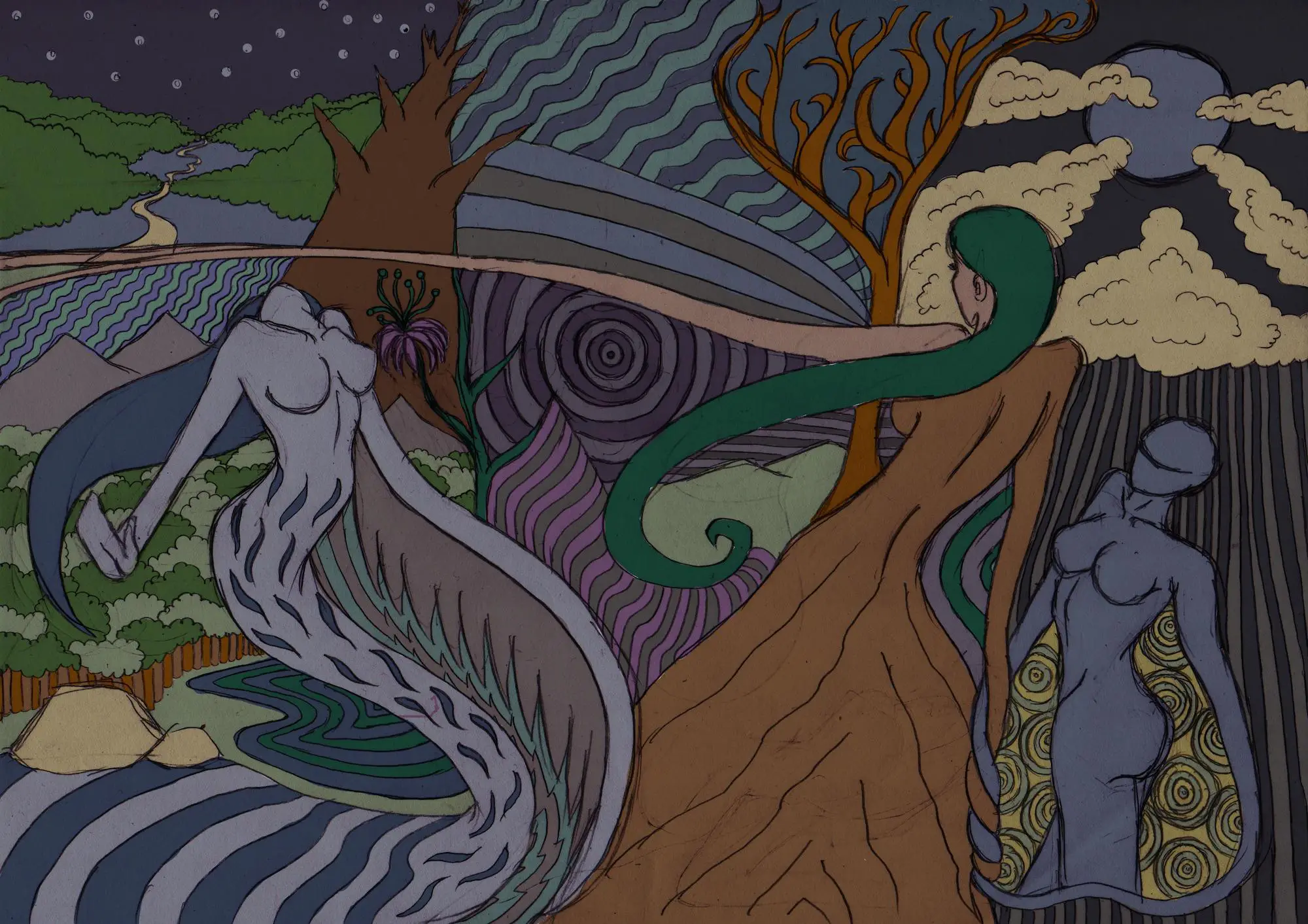Ugly, bony, immortal, and evil, Koschei the Deathless is the archetypal male antagonist and probably one of the scariest characters in Eastern Slavic folklore.
Having had his soul separated from his body and hidden on an island far away, Koschei the Deathless appears as an immortal and undefeatable creature (unless a story’s hero would find his hidden soul).
Because of it, many scholars see him as a folk interpretation of the Slavic god of Death [1].
Existing stories (from folklore) reveal little about his physical appearance, besides Koschei being un-appetizingly hideous. Available visuals more often than not depict him riding his horse fully naked through Russian mountains.
Koschei’s name has been derived from the universal Slavic word for bone (kost), (Коще́й Бессме́ртный/Кощі́й/Kościej/Kostěj/Koshchei), as he was imagined as a skinny old man with a bony face and fingers.
Many old Slavic tales describe Koschei the Deathless as the abductor of the story’s hero’s wife or mother. He might as well appear as Tsar Koschei, the ruler of all sorcerers, or as a military commander.
If you are interested in knowing more about Slavic folklore, make sure to check out this article about a Russian Vampire.
Table of Contents
Koschei’s Folk and Etymological Origins
While common sense tells us that Koschei was an imaginary creature, an archetypal character representing death and evil, some historical sources claim his origin is Turkic, specifically Polovtsian [2].
The character of Koschei the Deathless might be related to the Polovtsian 12th-century leader Khan Konchak.
His presence was last recorded in the early 13th century in Kyiv. Konchak has lived for more than 100 years, at the time encompassing more than six generations. His longevity was most likely the reason for Koschei’s epithet “deathless” or “immortal.”
Besides his insanely long life (especially for that time), you may be wondering now why did the Eastern Slavs pick this Turkic leader to create an immortal, evil, death-bringing character to life?
Even though Koschei’s relationship with Christian Eastern Slavs was quite nuanced and complex, as he once rescued the Russian Prince Igor from captivity, and his daughter later married Igor’s son, he was also pagan.
Hence, a plausible assumption is that Christian Slavs demonized a pagan leader and portrayed him as a stereotypical villain.
Although the root of Koschei’s name is the word kost, meaning bone, the term Koshey and its variations across all Slavic languages can also mean camp, military officer, captive, or slave, while in Turkic languages it means wanderer [3].
This corresponds to the narrative around Koschei the Deathless, as he takes all of these forms throughout various Russian and Ukrainian folk tales.
Koschei’s Immortality: The Death of the Koschei the Deathless
Despite his many powers, Koschei had one weakness: the fear of dying.
In an attempt to ensure his immortality, Koschei removed his soul from his body and put it in a needle. He placed the needle inside an egg, an egg inside a duck, a duck inside a rabbit, and the rabbit inside a crystal chest.
He buried the chest underneath a green oak tree on a faraway island, Bujan.
He believed that if someone was to find and open the chest, the rabbit would flee, and if the rabbit died, the duck would escape protecting the egg. However, if one would get their hands on the egg, its mere possession was enough to control Koschei and his powers.
If the egg would break, the needle should immediately break as well, forcing death on Koschei the Deathless, by imposing hundreds of years of aging on him in a single instant.
Some scholars argue that this nesting model actually symbolizes nature and the universe, finally leading to a conclusion that you can only find his soul and murder Koschei by destroying the world as a whole.
But this is just a poetic assumption. Although the legend says that the only way to defeat and kill Koschei the Deathless is to destroy the egg and needle, in most tales from folklore his life ends differently.
In the most prominent Russian fairy tale about Koschei The Legend of Koschei and Prince Ivan, the heroes of the story never encounter the egg, and according to our knowledge, the story doesn’t even mention it [4].
The Legend of Koschei the Deathless and Prince Ivan
Soon after losing both of his parents, Prince Ivan escorted his three sisters (Princess Anna, Princess Olga, and Princess Maya) to get married (each of them marrying a wizard in the form of a bird).
Soon after, the Prince became lonely and set off on a journey to get his sisters back.
On his ventures he once ran into a field of corpses, only to discover that those were the soldiers of Koschei the Deathless, who’s been captivated and imprisoned by Princess Marya Morevna.
They fell in love and got married, but soon enough, it was time for Marya to go into combat. Before she left, she warned Prince Ivan not to open a locked wardrobe in one of her chambers.
Curious as he was, Prince Ivan couldn’t resist the temptation, so he opened the wardrobe, only to find a weakened, thirsty and hungry old man locked with 12 chains. The Prince felt sorry for the man and let him drink water.
As soon as he quenched his thirst, the old man regained his strength and revealed his true identity as the immortal, powerful sorcerer, Koshchei. He broke his chains within seconds, kidnapped Prince Igor, and declared he would kidnap Princess Marya as well.
There are two known versions that depict the rest of the story.
The first one is surprisingly progressive portraying Princess Marya Morevna as an emancipated heroine that manages to rescue Prince Ivan after borrowing Baba Yaga’s finest and fastest horse.
The other version is the one you might have expected: Prince Ivan borrows the mighty horse from Baba Yaga and rescues his beloved Princess.
In both versions of the story, Koschei dies after the hero pierces him through the chest. No quest for the hidden chest on the island of Burja, no rabbits, ducks, eggs, nor needles.
Koschei’s Other Powers
This may sound funny, but according to Russian myths and folklore, there is more to Koschei than just being evil, death-bringing demon.
He is often portrayed as a sorcerer whose main power is frosting. His intentions are not good, his mind is wicked, and he sometimes has the ability to turn individual creatures or even the entire kingdoms into ice.
In several tales, he could turn his enemies into walnuts. He also has the power to turn everything into stone.
He’s known as a cunning womanizer, who seduces young girls. Sometimes he even uses magic or force to win their love. When he fails, he curses the girls and turns them into animals, plants, or stones.
In one story, a girl actually loves him back and decides to spend her life with him, as she succeeds at finding the gentle, humane side to Deathless Koschei.
Koschei the Deathless in Contemporary Culture
The contemporary approach to Koschei the Deathless interprets this creature not as an ancient Turkic Khan, nor the embodiment of death and pure evil itself, but as the force of nature.
This rather abstract, anthropological approach provides insight into the ancient Eastern Slavic belief system and uncovers certain psychological needs of the time.
In this case, it most likely reflects the need to explain and accept the inevitability of death, and its ubiquitous presence in the world and in life itself.
Besides providing a different intellectual approach to the subject, contemporary culture also celebrates the traditional viewpoints on Koschei.
Koschei appears in the video game Witcher 3 Wildhunt as the main villain. In MMORPG RuneScape he appears as a character under the name Koschei the Deathless.
The Death of Koschei is also the key plot in the video game series The Incredible Adventures of Van Helsing.
Koschei appears in a number of video games, but you might also run into him as a playable piece in Mantic Games’ Hellboy, The Sandman and Hellboy, The Board Game.
Furthermore, Koschei served as inspiration for the main villain in Mercedes Lackey’s novel, based on which Igor Stravinsky composed his famous ballet Firebird.
Before them, Nikolai Rimsky-Korsakow composed a single-movement opera Kaschei the Deathless, which premiered in the Russian theatre Solodovnikov in 1902.
The Bottom Line
I hope you enjoyed the story about one of the scariest Russian fairy tale characters. Unlike some other Slavic mythical creatures, the story of Koschei has apparently been preserved in written form, as well as succeeded from generation to generation.
The wealth of information and resources available about this creature tell us a lot about its relative importance for the Eastern Slavs. Centuries have passed, and Koschei is still present in cultural products, from music and films to video games.
References
- http://www.tema.unina.it/index.php/funes/article/view/5730/6306
- https://www.youtube.com/watch?v=EFwT_fxn2cc
- https://www.cambridge.org/core/journals/slavic-review/article/baba-yaga-the-ambiguous-mother-and-witch-of-the-russian-folktale-by-andreas-johns-international-folkloristics-vol-3-new-york-peter-lang-2004-vii-357-pp-appendixes-notes-bibliography-index-2995-paper/0A56159937522FE12796C40481E73761
- https://www.youtube.com/watch?v=3ZdhJ9e8NzQ







